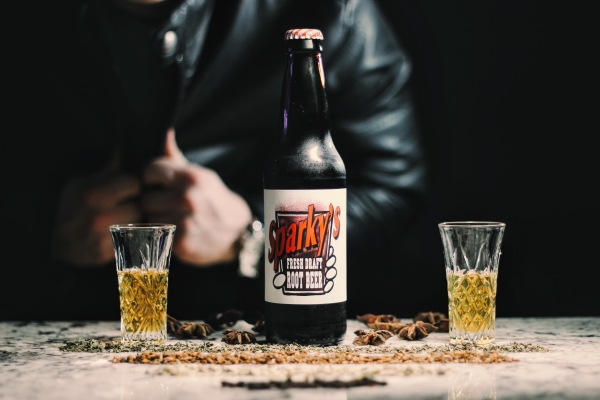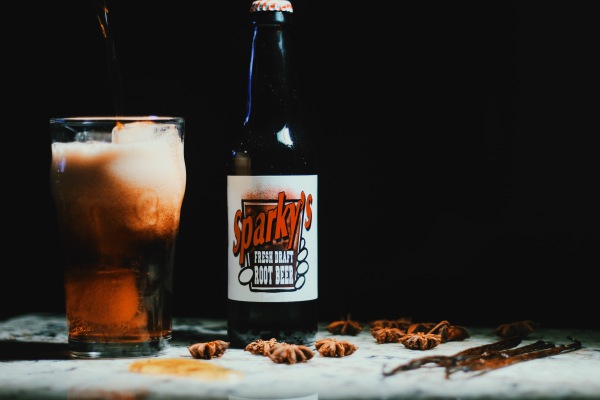History: This is a root beer 10 years in the making. This is a root beer as much about approach as it is ingredients. This is a root beer named after a cat. Yup, this is Sparky’s Root Beer. If you just clicked on that link, I know what you’re thinking. Yes, that website was bitch slapped with comic sans and yes, it looks like it was made in the year 2000. Considering the root beer found its final form in 1999, that’s probably a pretty good bet. But it was 10 years earlier when Kevin Knox started his root beer journey in Pacific Grove, California. Initially, it wasn’t even the goal. Knox was a veteran of the restaurant business and wanted to start his own, but admits he was hesitant because “it’s so risky.” This was right around the time when home brewing started to take off. Knox followed the trend and began brewing his own beer, hoping to eventually open a brewpub. The problem? It’s a $1 million venture and California ain’t a cheap place to run a business. Money wasn’t the only issue. Knox says beer was too limiting. “It didn’t take long to figure out I needed to make something for the kids and my non-alcohol drinking friends.” He experimented with fruit sodas to begin with, including a cranberry-apple soda he affectionately called “Crapple.” It didn’t work out. Root beer was the most logical choice for Knox, he says, because “it was always one of my childhood favorites.” After 10 years and “well over 100 batches” he found his desired recipe. But first, he had to name it. And this perhaps the strangest part. “Sparky is the name of my cat and he used to hang around me and watch me make it,” Knox tells us. I think we can almost all agree cats are at best a B- on the pet grading scale. And this one just paddywagoned its way around the kitchen enough to get root beer named after it? I can’t even get one of the local bars to name a cocktail after me, and Lord knows I spend enough time there. As for the flavor, he says it’s designed to be “kind of spicy, but still kind of sweet and creamy.” There’s over a dozen ingredients, with the most prominent ones being birch, local California honey, and pure cane sugar. Knox calls the rest of the herbs and spices in the soda “threshold flavors,” meaning he wants the drinker to be able to taste them, but not necessarily be strong enough to cross a threshold where they’re easily identifiable. Oh, and there is still one connection between Knox’s past homebrewing days and his root beer: Sparky’s is kettle-brewed in the same style of many craft beers. He claims this is what truly makes Sparky’s Root Beer unique. This is a soda as much about process as it is flavor.
Where to get: Sparky’s is available for purchase online in both 12 oz. and 22 oz. bottles. It’s also available from BevMO. You’re more likely to physically find it in the western half of the U.S. with California easily being your best bet.
Nose: Sarsaparilla root; vanilla; birch; spearmint. The sarsaparilla root is most noticeable with a little bit of mint. Really gets up in the nostrils.
Taste: Wintergreen; birch oil; vanilla; spices. This is definitely a root beer with a bite, and it’s up front. There’s a strong mint influence too. We taste wintergreen most, but wouldn’t be shocked if there’s some spearmint too. The birch bark flavor in this is also bold and right up front with the mint. What makes the flavor of Sparky’s Root Beer different from the rest of the pack are the spices. Tastes like there’s a few of them, perhaps some clove and anise. The initial flavors are the most potent part of the root beer and contain a spicy bite. After the mint and spices, you’ll taste a brief creaminess that gives the body of the root beer some variety. Vanilla and honey highlight this section. The creamy wave is gone as soon as it appears though and you’re left with a mildly spicy end of the sip.
Finish: Spicy mint that lingers before fading and leaving mild notes of vanilla.
Rating: Sparky’s Root Beer is a brew with lots of character. It’s highly varied in flavor. You could simultaneously classify it as botanical and spicy, yet creamy and sweet. Wintergreen and birch play a starring role in the flavor profile. They’re upfront and loud. Bold on the palate. And they’re enhanced by all of the spices in this root beer. We aren’t quite sure which ones are used, but whatever they are, they give the root beer a serious punch to the tongue. This is definitely a spicier root beer than what’s typically available; in my opinion those spices are the most critical ingredients in this soda. They provide contrast to the later tasting notes of vanilla and honey, enhance the mouth feel, and help Sparky’s separate itself from a crowded craft root beer field. In short, they’re a tremendous addition. Sparky’s Root Beer is like the foxy next door neighbor whose mature ways you long to experience from afar. Fortunately for you, this is just root beer, so you can. We mentioned above that on the second half of each sip you get a creamier vanilla flavor with big notes of honey. It’s an excellent flavor, but it’s a little too brief for me. The vanilla and honey fade quickly in favor of the strong influence of spices and wintergreen. If the two “halves” of the root beer had a more even stage presence in the mouth, this root beer would get a standing o’. I’d make the vanilla a little bit stronger for balance. But overall, I enjoy the contrast of sweet and savory here. Sparky’s might not have the most inspired label, but it’s flavor is sure to motivate repeat samplings.













